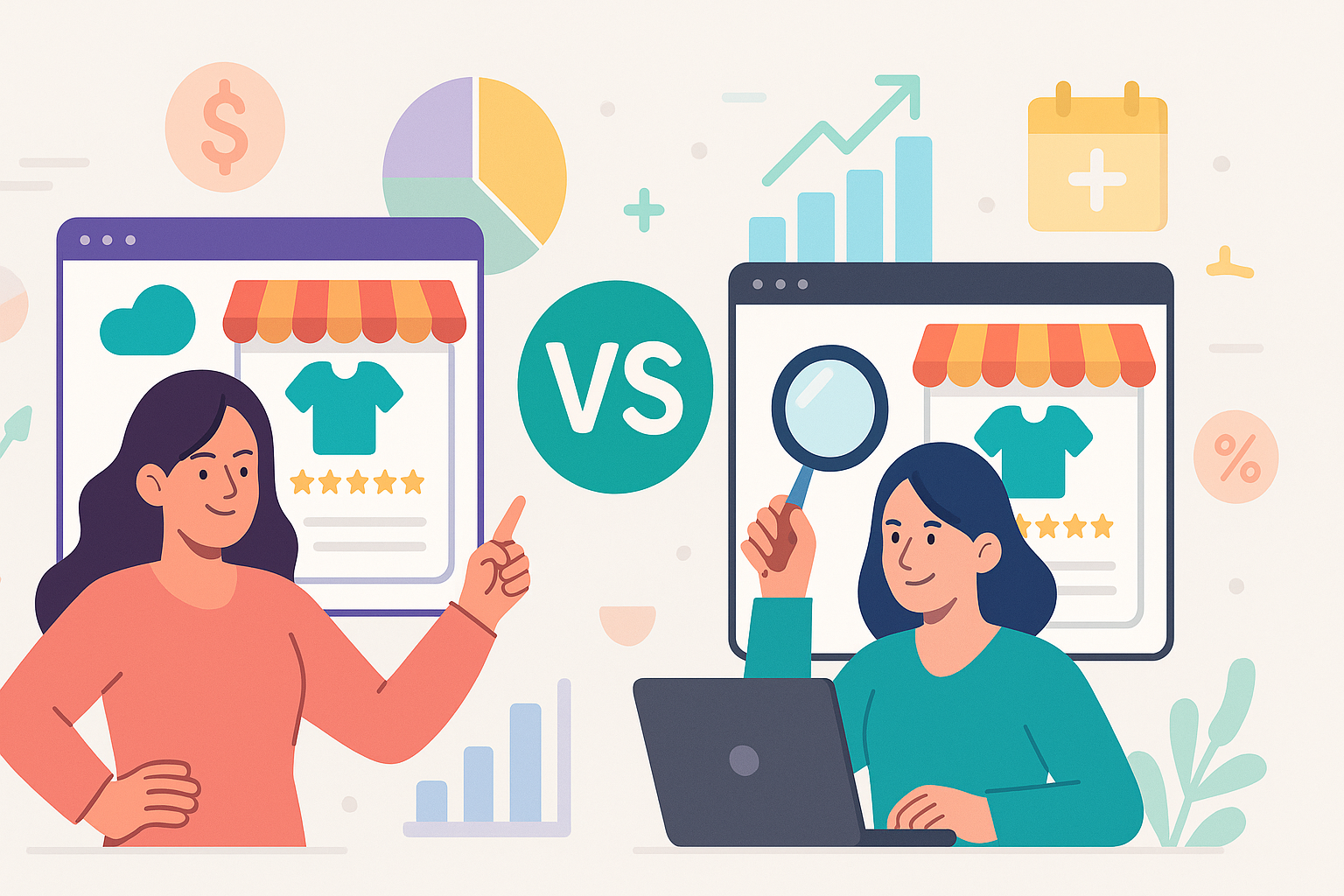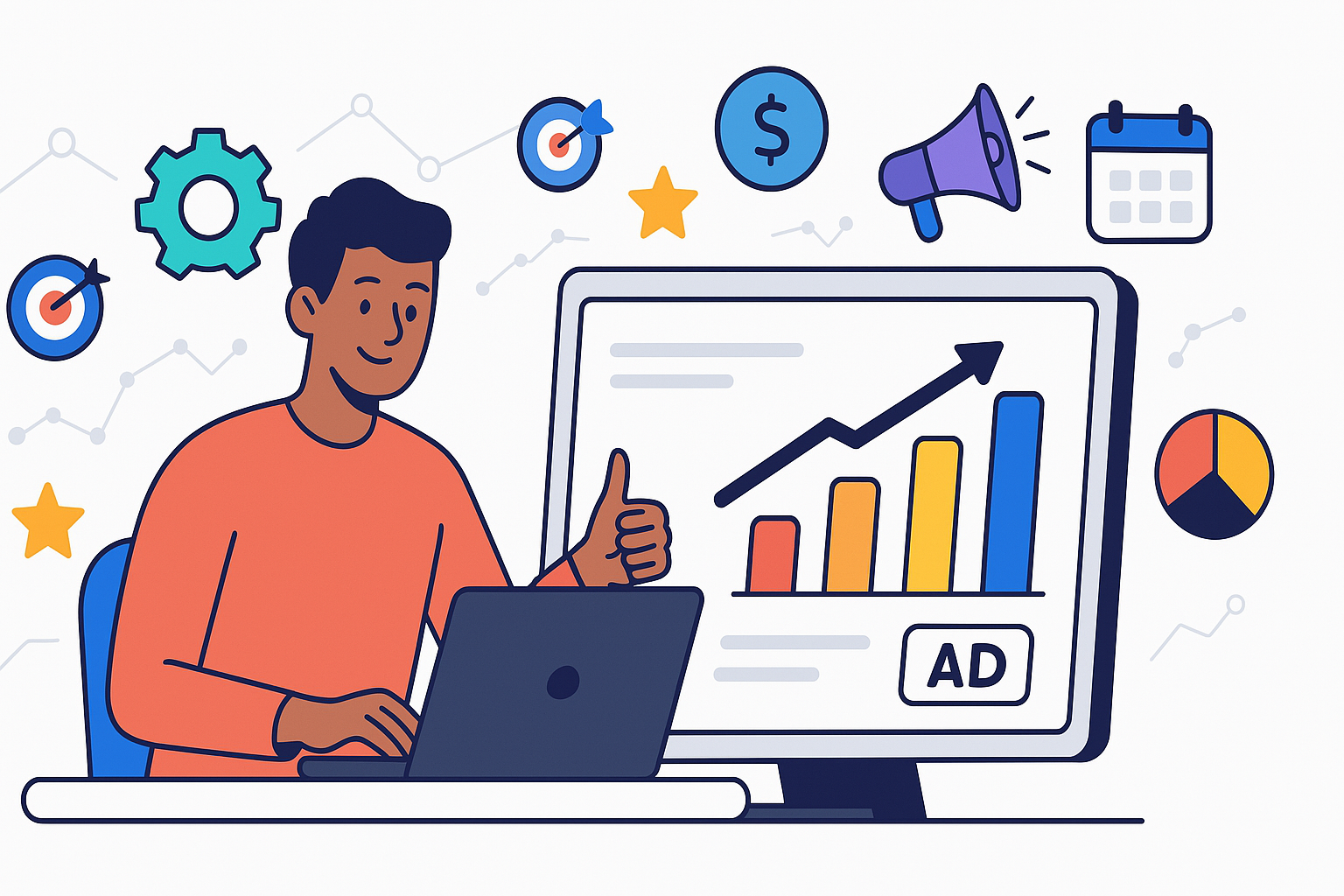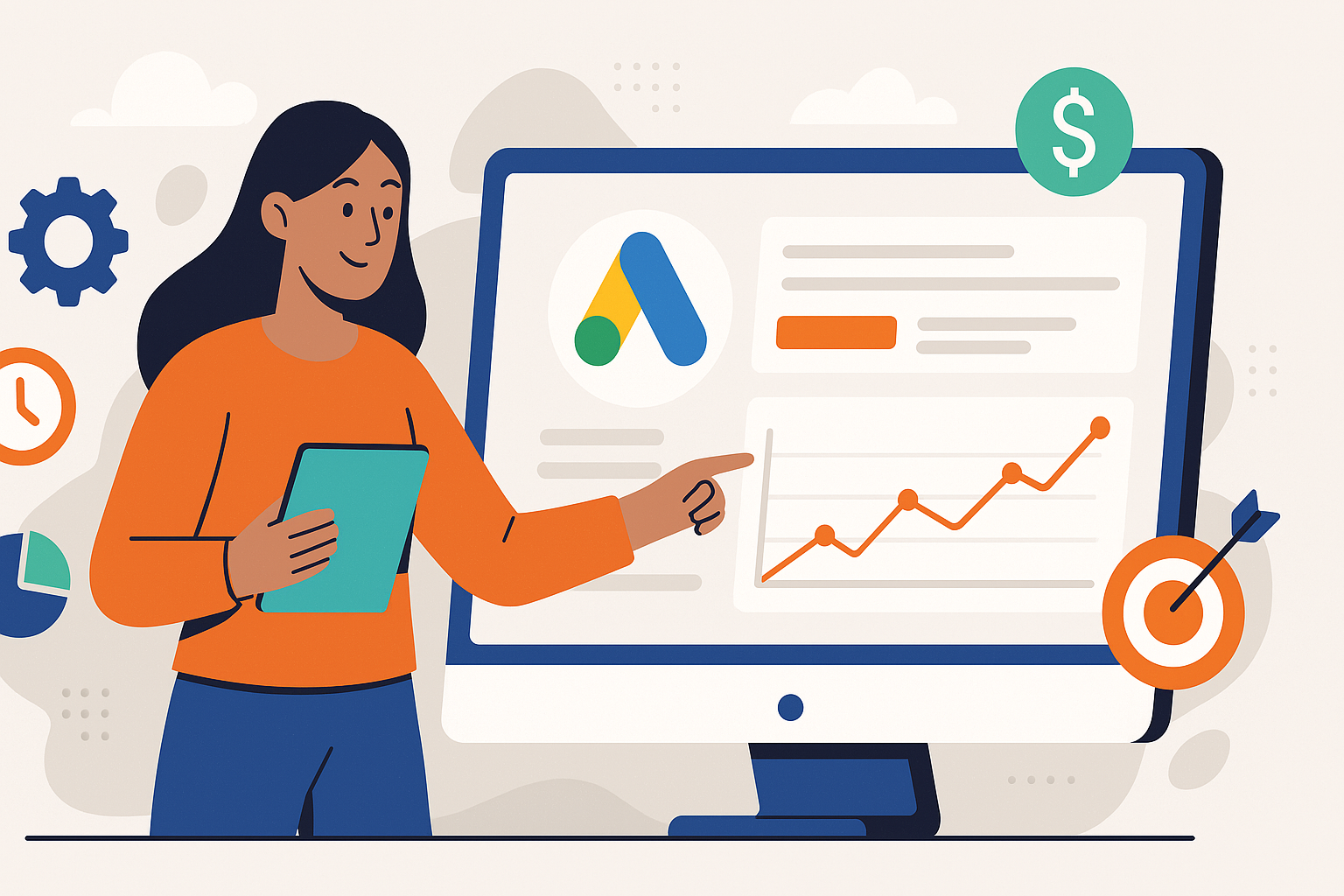What is a Marketing Funnel and How to Leverage It
by Francisco Kraefft on 22 May, 2024
In today's competitive business landscape, understanding and utilizing a marketing funnel is essential for any company aiming to convert prospects into loyal customers. A marketing funnel visually represents the customer journey, from the initial awareness stage to the final conversion and beyond. This article explores the intricacies of a marketing funnel, explaining its stages, strategies, and how you can effectively leverage it to boost your marketing efforts.
Understanding the Marketing Funnel
What is a Marketing Funnel?
A marketing funnel is a model that illustrates the path potential customers take from the first interaction with a brand to becoming a loyal customer. This concept helps businesses visualize and understand the customer journey, enabling them to implement strategies that guide prospects through each stage of the funnel.
Importance of a Marketing Funnel
The marketing funnel is crucial because it provides a structured approach to managing customer relationships and optimizing marketing efforts. By understanding the stages of the funnel, businesses can:
- Identify Weak Points: Recognize where prospects drop off and implement strategies to improve retention.
- Allocate Resources Effectively: Focus efforts on stages that require more attention.
- Improve Customer Experience: Tailor marketing strategies to meet prospects' needs at different stages.
History and Evolution of Marketing Funnels
The marketing funnel concept has evolved significantly since its inception in the late 19th century. Initially, it was a simple linear model, but with the advent of digital marketing, the funnel has become more complex, incorporating multiple touchpoints and feedback loops. Today's marketing funnels are dynamic and multifaceted, reflecting the nonlinear nature of the modern customer journey.
Basic Structure of a Marketing Funnel
The basic structure of a marketing funnel consists of several stages, each representing a different phase in the customer journey. These stages typically include:
- Awareness: The prospect becomes aware of the brand or product.
- Consideration: The prospect evaluates the brand or product.
- Conversion: The prospect makes a purchase or takes the desired action.
- Loyalty: The customer continues to engage with the brand post-purchase.
- Advocacy: The customer becomes a brand advocate, promoting the brand to others.
Stages of the Marketing Funnel
Awareness Stage
The awareness stage is the top of the funnel (TOFU), where potential customers first become aware of your brand or product. At this stage, the goal is to attract as many prospects as possible through various marketing efforts such as:
- Content Marketing: Creating valuable content that educates and informs.
- Social Media Marketing: Engaging with potential customers on social media platforms.
- SEO: Optimizing content for search engines to increase visibility.
Consideration Stage
In the consideration stage, prospects know your brand and are now evaluating whether your product or service meets their needs. Strategies for this stage include:
- Email Marketing: Sending targeted emails to nurture leads.
- Webinars and Demos: Offering in-depth information and live demonstrations.
- Case Studies: Showcasing success stories and testimonials.
Conversion Stage
In the conversion stage, the prospect decides to take action, such as making a purchase or signing up for a service. Key strategies include:
- Landing Pages: Creating optimized landing pages with clear calls to action.
- Retargeting Ads: Using ads to remind and encourage prospects to convert.
- Sales Promotions: Offering discounts or incentives to drive conversions.
Loyalty Stage
In the loyalty stage, the focus is on retaining customers and encouraging repeat business. Strategies include:
- Customer Support: Providing excellent customer service and support.
- Loyalty Programs: Creating programs that reward repeat customers.
- Engagement Campaigns: Continuing to engage customers through newsletters and updates.
Advocacy Stage
In the advocacy stage, loyal customers become advocates for your brand, promoting it to others. Strategies include:
- Referral Programs: Encouraging customers to refer others.
- User-Generated Content: Leveraging content created by satisfied customers.
- Community Building: Creating communities where customers can interact and share their experiences.
Strategies for Each Funnel Stage
Creating Awareness
To effectively create awareness, consider the following strategies:
- Content Marketing: Develop blog posts, videos, and infographics that address the pain points of your target audience.
- Social Media Campaigns: Run campaigns on platforms where your audience is most active.
- Public Relations: Gain media coverage and engage in community events.
Engaging Prospects
Engaging prospects during the consideration stage requires targeted efforts:
- Personalized Email Campaigns: Use segmentation to send relevant content to different audience groups.
- Interactive Content: Create quizzes, surveys, and interactive tools that engage users.
- Educational Resources: Offer eBooks, whitepapers, and guides that provide in-depth information.
Driving Conversions
To drive conversions, focus on the following:
- Optimized CTAs: Ensure your calls-to-action are clear and compelling.
- Simplified Checkout Process: Make purchasing as easy and seamless as possible.
- Live Chat Support: Provide real-time assistance to address concerns or questions.
Building Customer Loyalty
Building customer loyalty involves continuous engagement:
- Exclusive Offers: Provide special deals and discounts to returning customers.
- Feedback Loops: Regularly seek feedback and show that you value customer opinions.
- Consistent Communication: Keep in touch through regular updates and personalized messages.
Turning Customers into Advocates
Turning customers into advocates requires creating a positive and memorable experience:
- Exceptional Service: Go above and beyond in customer service to create memorable experiences.
- Social Proof: Encourage satisfied customers to leave reviews and testimonials.
- Engagement in Community: Foster a sense of community among your customers, encouraging them to share their experiences.
Tools and Techniques for Funnel Optimization
CRM Systems
Customer Relationship Management (CRM) systems help businesses manage interactions with current and potential customers. They provide valuable insights into customer behavior and help streamline the marketing process.
Marketing Automation
Marketing automation tools allow businesses to automate repetitive tasks like email campaigns, social media posts, and ad management. This increases efficiency and ensures consistent communication with prospects and customers.
Analytics and Tracking
Analytics tools provide data on how prospects move through the funnel, helping businesses identify bottlenecks and opportunities for optimization. Key metrics include website traffic, conversion rates, and customer retention rates. We recommend using Google Analytics as your first-to-go tool.
A/B Testing
A/B testing involves comparing two versions of a marketing asset to determine which performs better. This can be applied to landing pages, email campaigns, and advertisements to optimize for higher conversions.
Measuring Funnel Success
Key Performance Indicators (KPIs)
KPIs are metrics used to evaluate the success of your marketing funnel. Common KPIs include:
- Conversion Rate: The percentage of visitors who take the desired action. Learn here what conversions and conversion rates are.
- Customer Acquisition Cost (CAC): The cost of acquiring a new customer.
- Lifetime Value (LTV): The total revenue a customer generates over their lifetime.
Analyzing Funnel Metrics
Regularly analyzing funnel metrics helps identify areas for improvement. Look for patterns and trends in the data to understand where prospects are dropping off and where efforts are succeeding.
Case Studies of Successful Funnels
Studying successful marketing funnels can provide valuable insights. Look at companies in your industry that have effectively optimized their funnels and learn from their strategies and tactics.
Challenges and Solutions in Funnel Management
Common Funnel Challenges
- High Drop-Off Rates: Losing prospects at various stages of the funnel.
- Low Engagement: Difficulty in keeping prospects engaged.
- Inaccurate Data: Challenges in collecting and analyzing accurate data.
Solutions and Best Practices
- Regular Optimization: Continuously test and refine your funnel strategies.
- Engagement Strategies: Use personalized content and interactive tools to engage prospects.
- Data Accuracy: Implement reliable tracking systems and regularly audit your data.
Advanced Funnel Strategies
Personalization and Segmentation
Personalizing marketing efforts based on customer data can significantly improve engagement and conversions. Segment your audience based on demographics, behavior, and preferences to deliver tailored content.
Multi-Channel Funnel Integration
Integrating multiple marketing channels, such as email, social media, and paid ads, creates a cohesive customer journey. Ensure consistent messaging across all channels to enhance the customer experience.
Leveraging AI in Marketing Funnels
Artificial Intelligence (AI) can provide predictive analytics, personalized recommendations, and automated customer interactions. Implementing AI tools can enhance the efficiency and effectiveness of your marketing funnel.
Real-Life Examples of Marketing Funnels
E-commerce Funnel Example
An e-commerce funnel typically attracts visitors through SEO and social media, engages them with product descriptions and reviews, and converts them through a streamlined checkout process.
SaaS Funnel Example
A Software as a Service (SaaS) funnel often includes offering free trials or demos to attract prospects, nurturing leads through email campaigns and webinars, and converting them to paid subscriptions with personalized onboarding.
B2B Funnel Example
A B2B funnel may involve generating leads through content marketing and networking, engaging prospects with case studies and product demos, and closing deals through targeted sales efforts and relationship building.
Conclusion
Understanding and leveraging a marketing funnel is essential for guiding prospects through the customer journey and optimizing marketing efforts. By implementing the strategies outlined in this article, you can effectively attract, engage, convert, and retain customers, ultimately turning them into loyal advocates for your brand.
Reach out to us to build your marketing funnel.
FAQs
What is a marketing funnel?
A marketing funnel visually represents the customer journey, illustrating prospects' stages, from awareness to conversion and beyond.
How can I optimize my marketing funnel?
Optimize your marketing funnel by analyzing funnel metrics, conducting A/B testing, and continuously refining your strategies based on data insights.
What are the key stages of a marketing funnel?
The critical stages of a marketing funnel include awareness, consideration, conversion, loyalty, and advocacy.
Why is a marketing funnel important?
A marketing funnel is vital because it helps businesses understand and manage the customer journey, improving customer experience and optimizing marketing efforts.
How do I measure the success of my marketing funnel?
Track key performance indicators (KPIs) such as conversion rates, customer acquisition cost (CAC), and lifetime value (LTV) to measure the success of your marketing funnel.
What tools can help with marketing funnel management?
CRM systems, marketing automation software, analytics platforms, and A/B testing tools can help manage and optimize your marketing funnel.


